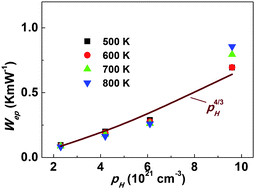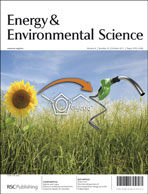Heavily doped compounds Mo3Sb7−xTex (x = 0, 1.0, 1.4, 1.8) were synthesized by solid state reaction and sintered by spark plasma sintering. Both X-ray diffraction and electron probe microanalysis indicated the maximum solubility of Te was around x = 1.8. The trends in the electrical transport properties can generally be understood using a single parabolic band model, which predicts that the extremely high carrier concentration of Mo3Sb7 (∼1022 cm−3) can be reduced to a nearly optimized level (∼2 × 1021 cm−3) for thermoelectric figure of merit (zT) by Te-substitution with x = 1.8. The increased lattice thermal conductivity by Te-doping was found to be due to the decreased Umklapp and electron–phonon scattering, according to a Debye model fitting. The thermoelectric figure of merit (zT) monotonously increased with increasing temperature and reached its highest value of about 0.51 at 850 K for the sample with x = 1.8, making these materials competitive with the state-of-the-art thermoelectric SiGe alloys. Evidence of significant electron–phonon scattering is found in the thermal conductivity.

You have access to this article
 Please wait while we load your content...
Something went wrong. Try again?
Please wait while we load your content...
Something went wrong. Try again?


 Please wait while we load your content...
Please wait while we load your content...